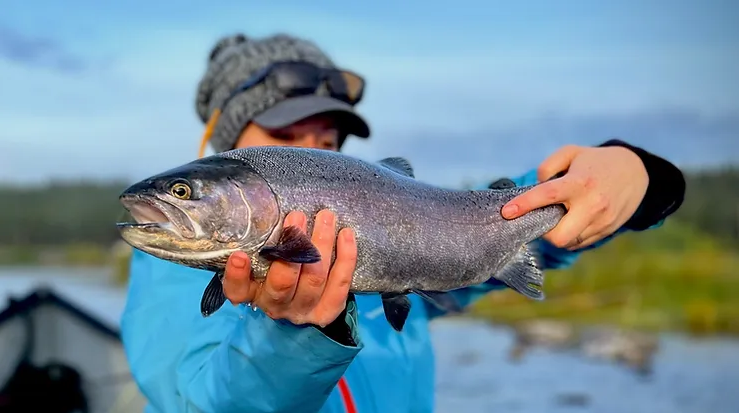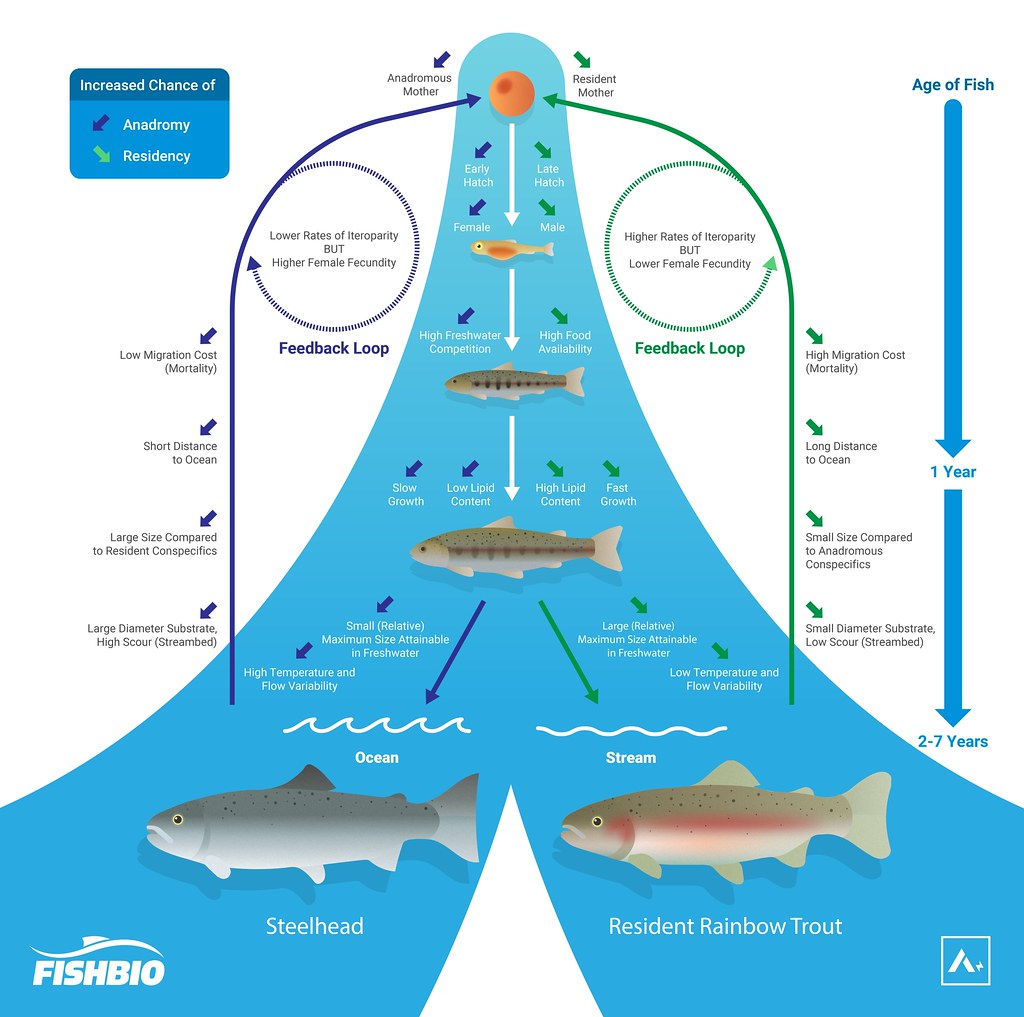The Weird Biology of Half-Pounder Steelhead
Fly fishing: Let's take a look at the weird biology of half-pounder Steelhead

updated April 2024
In their native waters to the Pacific Northwest, Rainbow trout and Steelhead coexist in many waterways connecting to the ocean. Of course, this is because Rainbow trout and Steelhead are genetically linked. As part of the same species, Oncorhynchus mykiss, the difference between a Steelhead and a Rainbow trout draws back to the decision by freshly emerged fish to either stay in their freshwater habitat, or make the perilous journey to the ocean. Research suggests that the complex interactions between genetics and environmental factors influence whether or not a young steelhead (aka rainbow trout) accepts the challenges of the full steelhead lifestyle. For a detailed look at these complex factors, see the below figure.

To simply the above figure: factors like sex, food availability, competition, habitat quality, growth rate, and climate all interplay to affect the biological decision making of a young rainbow trout. After the fish's first year, the decision to head ocean side is more appealing to the smaller fish within the cohort. Alternatively, years with high temperatures or variability in flow can also influence more young fish to choose the ocean life. Meanwhile, the larger individuals, or individuals in years with lower temperatures and more stable flows are more likely to take their chances as resident rainbow trout. From there, steelhead may spend up to three years in the ocean before returning to their natal spawning streams. Though this process maybe a complicated set of circumstances in the eyes of scientists, after a fish's first year there are really only two outcomes... unless you look more closely at the rivers of Northern California and Southern Oregon.
First described in 1925 by John Snyder, zoologist from Stanford University, half-pounder steelhead seem to break from the conformity of the ocean bound vs. resident freshwater life history options. Within the first year in a half-pounders ocean residence, these immature steelhead return back to freshwater streams to over-winter. A noticeably quicker return to freshwater compared to the two-three years that's common for full-fledged Steelhead. When scientists took a closer look into this odd migration option, they determined that half-pounder steelhead were smaller, on average, than other similar aged ocean dwelling steelhead. The most likely reason for a fish to favor this migration strategy stems from their improved chances of survival by over-wintering in freshwater habitats instead of braving winter in the open ocean. At least compared to their larger sized counterparts...
If you're lucky enough to find yourself on the Klamath River, Rogue River, Eel River, or Trinity River from early October through January, you might be able to try your hand for one of the rarest variations of gamefish in all of North America.

Sources:
- FISHBIO. 2018. Rainbow Trout: Should I Stay or Should I Go? https://fishbio.com/rainbow-trout-stay-go/
- Center for Biological Diversity. Accessed 2022. Natural History: Central Californa Coast Steelhead Trout. https://www.biologicaldiversity.org/species/fish/central_California_coast_steelhead_trout/natural_history.html#:~:text=LIFE%20CYCLE%3A%20Steelhead%20eggs%20hatch,to%20fresh%20water%20to%20spawn
- FISHBIO. 2014. Half-pounder History. https://fishbio.com/half-pounder-history/
- Peterson, M. L. 2011. Possible decline in the half-pounder life history among Trinity River steelhead (Oncorhynchus mykiss). Humboldt State University. https://scholarworks.calstate.edu/concern/theses/xs55mf40g
- Sheely, T. W. 2019. Half-Pounders and Summer-Runs. Salmon and Steelhead Journal. https://fishingontherogueriver.com/wp-content/uploads/2019/07/Steelhead_Article-Terry_Sheely.pdf


